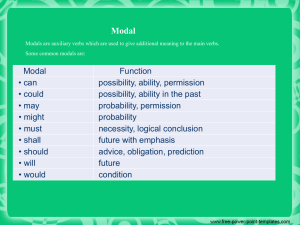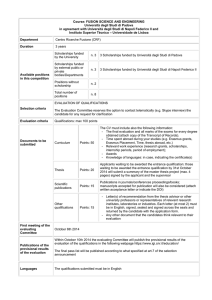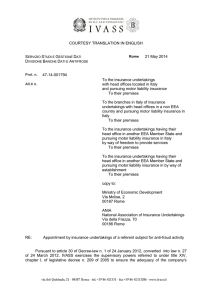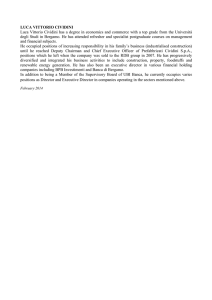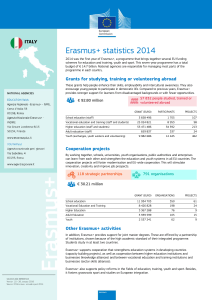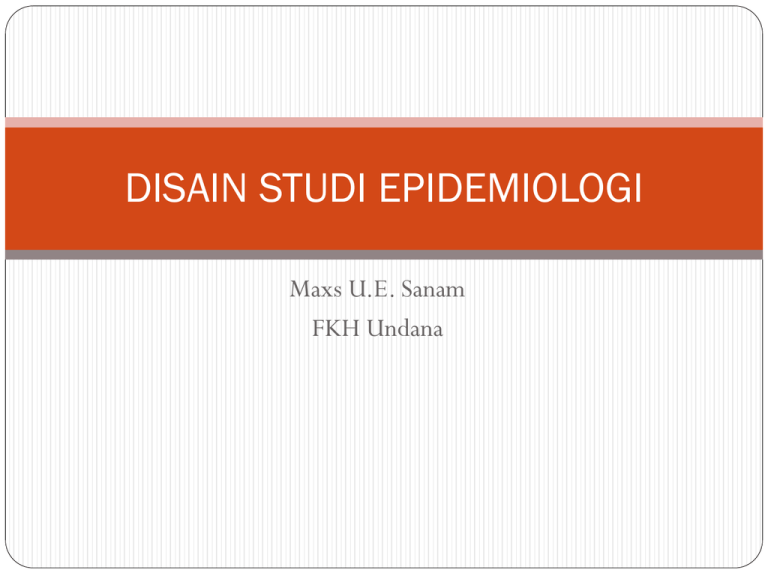
DISAIN STUDI EPIDEMIOLOGI
Maxs U.E. Sanam
FKH Undana
METODE PENELITIAN EPIDEMIOLOGIS
SURVEI vs EKSPERIMEN
SURVEI : Survei deskriptif vs Survei analitik
SURVEI (Noneksperimen)
TIDAK ada intervensi/perlakuan terhadap variabel
Hanya dilakukan observasi terhadap fenomena alam,
sosial, atau
Mencari hubungan fenomena tsb di antara variabel
Pengambilan data menggunakan sampel dan kuisioner
Deskriptif vs Analitis
Survei deskriptif (Epidemiologi deskriptif)
Dilakukan tanpa hipotesis
Biasanya studi awal ataupun studi karakterisasi suatu
penyakit baru
Survei analitis (Epidemiologi analitis)
Mengidentifikasi dan menguji hipotesis tentang adanya
asosiasi antara paparan terhadap faktor risiko dan terjadinya
suatu kejadian penyakit (exposure of interest vs a particular
outcome)
EKSPERIMENTAL
Ada intervensi/perlakuan terhadap variabel
Adanya kelompok Kontrol
Randomized clinical trial (Uji Klinis Teracak)
Community or herd trial (Uji Kelompok atau
Masyarakat)
Diagram Pohon menguraikan hubungan di antara tipe-tipe
Rancangan Studi Epidemiologis utama
Faktor Risiko
Faktor Risiko Intrinsik (berasal dari host)
Jenis kelamin dan usia
Faktor anatomi dan fisiologis
Faktor nutrisi
Faktor imunitas
Faktor ekstrinsik (di luar host)
Fisik, kimiawi, biologis, psikologis, budaya,
perilaku, manajemen
Hubungan antara Agen, Faktor Risiko, dan Efek
(Penyakit)
Faktor
Risiko
Internal
Agen
penyakit
Man/Animals
as Host
Eksternal
Sakit
Case Reports
describes some ‘newsworthy’ clinical occurrence,
such as
unusual combination of clinical signs
experience with a novel treatment, or
a sequence of events that may suggest
previously unsuspected causal relationships.
Case reports are generally reported as a clinical
narrative.
Contoh Studi Kasus
Trivier at al (2001) reported the occurrence of
fatal aplastic anaemia in an 88 year-old man who
had taken clopidogrel, a relatively new drug on
the market that inhibits platelet aggregation.
The authors speculated that his fatal illness may
have been caused by clopidogrel and wished to
alert other clinicians to a possible adverse effect
of the drug.
Reference: Trivier JM, Caron J, Mahieu M, Cambier N, Rose C (2001). Fatal
aplastic anaemia associatedwith clopidogrel. Lancet, 357: 446.
Cases series
A case report shows that something can happen
once, a case series shows that it can happen
repeatedly.
A case series identifies common features among
multiple cases
and describes patterns of variability among them.
Contoh Case Series
After bovine spongiform encephalopathy (BSE) appeared in British
cattle in 1987, there was concern that the disease might spread to
humans.
A special surveillance unit was set up to study Creutzfeld-Jacob
disease (CJD), a rare and fatal progressive dementia that shares
clinical and pathological features of BSE.
In 1996 investigators at the unit described ten cases that met the
criteria for CJD but had all occurred at unusually young ages,
showed distinctive symptoms and, on pathological examination,
had extensive prion protein plaques throughout the brain similar
to BSE.
Reference: Will RG, Ironside JW, Zeidler M, Cousens SN, Estibeiro K,
Alperovitch A et al (1996). A new variant of Creutzfeld-Jacob disease in the
UK. Lancet, 347: 921 - 925.
Descriptive studies based on rates
Descriptive studies based on rates quantify the
burden of disease on a population
Using incidence, prevalence, mortality or other
measures of disease frequency.
Most use data from existing sources (such as birth
and death certificates, disease registries or
surveillance systems).
Descriptive studies can be a rich source of
hypotheses that lead later to analytic studies.
Contoh Studi deskriptis yang didasarkan
pada frekuensi/intensitas
Schwarz et al (1994) conducted a descriptive epidemiological study of
injuries in a predominantly African-American part of Philadelphia.
An injury surveillance system was set up in a hospital emergency
centre.
Denominator information came from US census data. These authors
found a high incidence of intentional interpersonal injury in this area
of the city.
Reference: Schwarz DF, Grisso JA, Miles CG, Holmes JH, Wishner AR, Sutton
RL (1994). A longitudinal study of injury morbidity in an African-American
population. Journal of the American Medical Association,271: 755 - 760.
Analytical Study
to test a hypothesis
Hypothesis typically concerns whether a certain exposure
causes a certain outcome — e.g. Does cigarette smoking
cause lung cancer?
exposure is refer to any trait, behaviour, environmental
factor or other characteristic as a possible cause of disease.
Synonyms for exposure are: potential risk factor, putative
cause, independent variable, and predictor.
Outcome generally refers to the occurrence of disease.
Synonyms for outcome are: effect, end-point, and dependent
variable.
Ecological studies
the unit of analysis is a group of individuals (such as
countries, states, cities, or census tracts)
summary measures of exposure and summary measures of
outcome are compared.
A key feature of ecological studies is that inference can only
be made at the group level, not at the individual level.
Ecological studies are relatively quick and inexpensive to
perform
It can provide clues to possible associations between
exposures and outcomes of interest.
Example
Yang et al (1998) conducted an ecological study examining
the association between chlorinated drinking water and
cancer mortality among 28 municipalities in Taiwan.
The investigators found a positive association between the
use of chlorinated drinking water and mortality from rectal,
lung, bladder, and kidney cancer.
Reference:Yang CY, Chiu HF, Cheng MF, Tsai SS (1998).
Chlorination of drinking water and cancer in Taiwan.
Environmental Research, 78: 1 - 6.
Cross-sectional studies
In a cross-sectional study a random sample of individuals
from a population is taken at a point in time.
Individuals included in the sample are examined for the
presence of disease and their status with regard to the
presence or absence of specified risk factors.
Cross sectional studies commonly involve surveys to collect
data. Surveys range from simple one-page questionnaires
addressing a single variable, to highly complex, multiple page
designs.
Advantages:
relatively quick to conduct and cost moderate
Disadvantages:
cannot provide information on the incidence of disease in a
population — only an estimate of prevalence.
Difficult to investigate cause and effect relationships.
Example
Anderson et al (1998) studied 4,063 children aged 8 to 16
years who had participated in the National Health Survey to
assess the relationship between television watching and bodymass index.
At a single examination, each child was asked a series of
questions about their usual amount of television viewing.
Height, weight and a series of other body measurements
were taken at the same time.
Boys and girls who reported watching four or more hours of
television per day had significantly greater body mass indexes
than boys and girls who reported watching fewer than two
hours of television per day.
Cohort studies
comparing disease incidence over time between groups
(cohorts) that are found to differ on their exposure to a
factor of interest.
Cohort studies can be distinguished as either prospective or
retrospective
A prospective cohort study begins with the selection of two
groups of non-diseased animals, one exposed to a factor
postulated to cause a disease and the other unexposed.
The groups are followed over time and their change in
disease status is recorded during the study period.
A retrospective cohort study starts when all of the disease
cases have been identified.
The history of each study participant is carefully evaluated
for evidence of exposure to the agent under investigation.
Advantages:
Because subjects are monitored over time for disease
occurrence, cohort studies provide estimates of the absolute
incidence of disease in exposed and non-exposed
Disadvantages:
require a long follow-up period.
In the case of rare diseases large groups are necessary.
Losses to follow-up can become an important problem.
Often quite expensive to run.
Schematic diagram of a prospective and retrospective cohort study
Case-control studies
comparing the frequency of past exposure between cases
who develop the disease (or other outcome of interest) and
controls chosen to reflect the frequency of exposure in the
underlying population at risk.
Advantages:
Case-control studies are an efficient method for studying rare
diseases.
Because subjects have experienced the outcome of interest at
the start of the study,
case-control studies are quick to run and are considerably
cheaper than other study types.
Disadvantages:
Case-control studies cannot provide information on the
disease incidence in a population.
The study is reliant on the quality of past records or
recollection of study participants.
It can also be very difficult to ensure an unbiased selection of
the control group and,
as a result, the representativeness of the sample selection
process is difficult to guarantee.
Contoh Studi
Muscat et al (2000) sought to test the hypothesis that cellular
telephone use affects the risk of brain cancer.
From 1994 to 1998 at five academic medical centres in the USA
they recruited 469 cases aged 18 to 80 years with newly diagnosed
cancer originating in the brain.
Controls (n = 422) were inpatients without brain cancer at those
hospitals, excluding those with leukaemia or lymphoma.
Controls were sampled to match the cases on age, sex, race and
month of admission. Each case and control was then interviewed
about any past subscription to a cellular telephone service.
Contoh...
Overall 14.1% of cases and 18.0% of controls reported ever
having had a subscription for a cellular telephone service.
After adjusting for age, sex, race, education, study centre,
and month and year of interview
the risk of developing brain cancer in a cellular telephone
user was estimated to be 0.85 (95% CI 0.6 – 1.2) times as
great as in a non-user.
Experimental studies
Randomised clinical trials
The randomised clinical trial is the epidemiologic design that
most closely resembles a laboratory experiment.
The major objective is to test the possible effect of a
therapeutic or preventive intervention.
to assign participants to either the treatment or control
group.
Subjects are then followed over time to measure one or more
outcomes, such as the occurrence of disease. All things being
equal
Advantages:
Randomisation generally provides excellent control over
confounding, even by factors that may be hard to measure or that
may be unknown to the investigator.
results from randomised trials offer a more solid basis for
inference of cause and effect than results obtained from any other
study design
Disadvantages:
For many exposures it may not be ethical or feasible to conduct a
clinical trial (e.g. exposure to pollution).
Expensive.
Impractical if long periods of follow-up required.
Example
Bacterial vaginosis affects an estimated 800,000 pregnant women each
year in the USA and has been found to be associated with premature
birth and other pregnancy complications.
To determine whether treatment with antibiotics could reduce the
incidence of adverse pregnancy outcomes, Carey et al (2000) screened
29,625 pregnant women to identify 1953 who had bacterial vaginosis,
met certain other eligibility criteria, and consented to participate.
Women were randomly assigned to receive either: (1) two 2 gram doses
of metronidazole, or (2) two doses of a similar-appearing placebo.
Bacterial vaginosis resolved in 78% of women in the treatment group,
but in only 37% of women in the placebo group.
Pre-term labour, postpartum infections in the mother or infant, and
admission to the neonatal intensive care unit were equally common in
both groups.
Schematic diagram of a randomised clinical trial
Community trials
Instead of randomly assigning individuals to treatment or
control groups,
community trials assign interventions to entire groups of
individuals.
In the simplest situation one group (community) receives the
treatment and another serves as a control.


